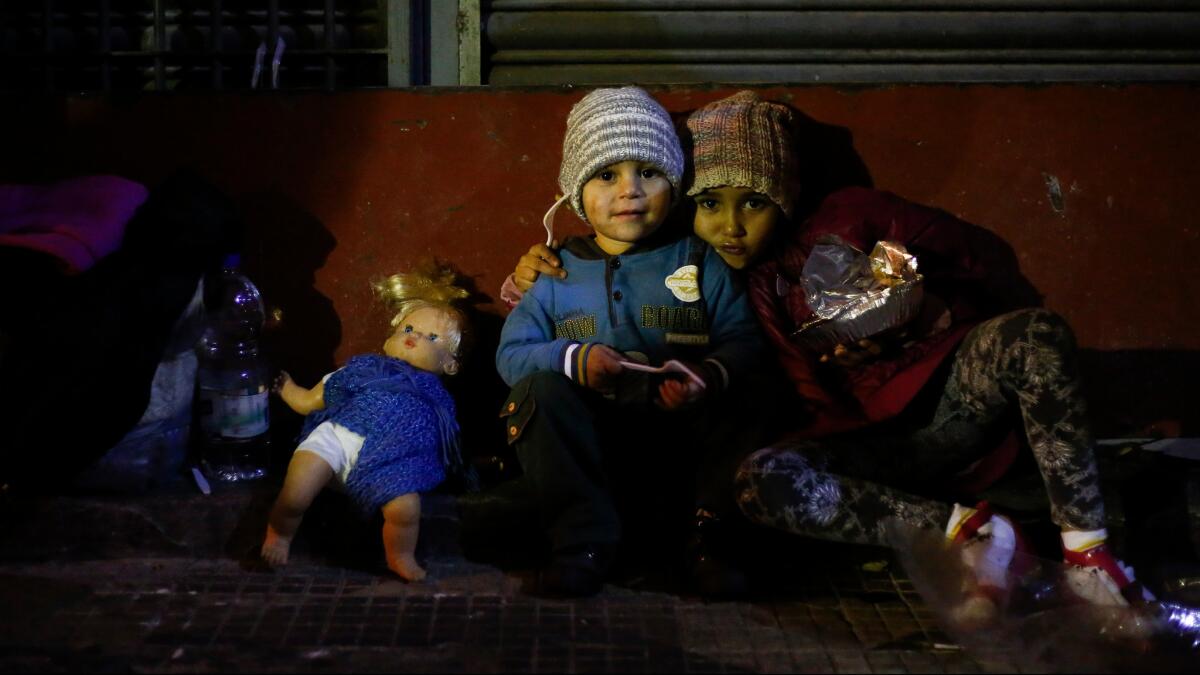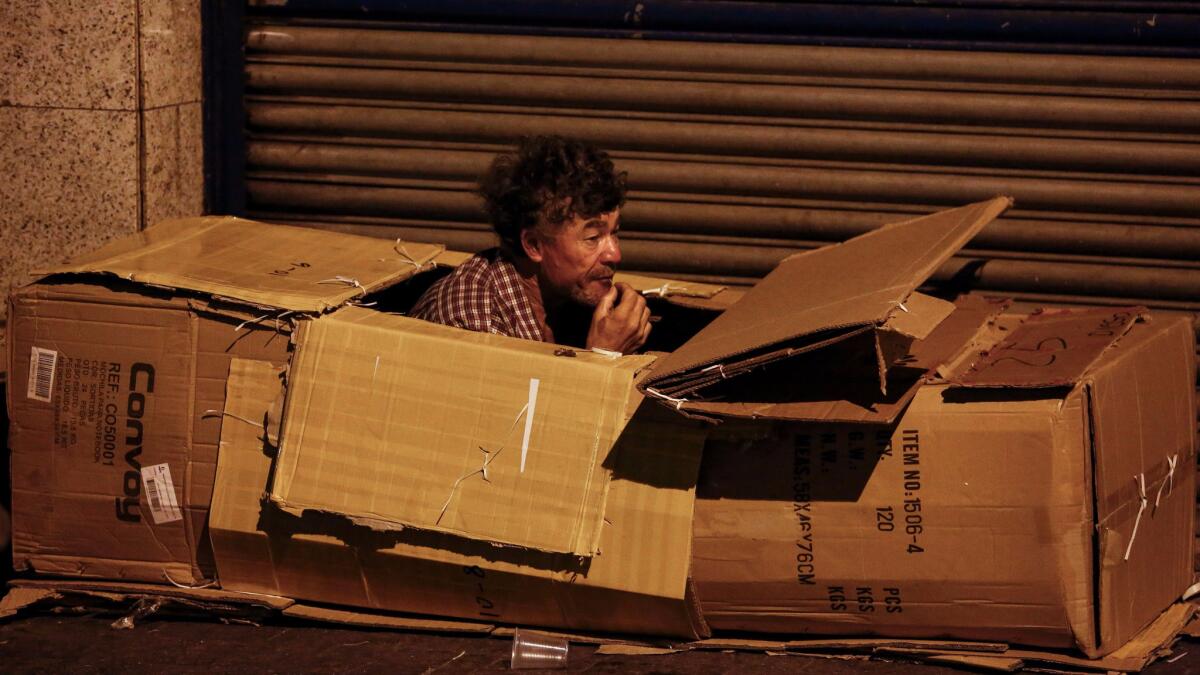Why some of Brazil’s growing homeless population would rather stay on the streets

- Share via
Reporting from Sao Paulo. Brazil — As rain poured down on a cold winter night, a husband and wife huddled with their two dogs in a tent along Ipiranga Avenue in downtown Sao Paulo.
When the storm subsided, 42-year-old Saulo Pereira da Silva climbed out and surveyed the damage. A mattress that served as their outdoor seating had been washed down the sidewalk.
“I’ve been here for four years, ever since I got out of prison,” he said, explaining that after he served time for robbery, he had no other place to go.
His wife, Gabriela Souza de Jesus, has always lived on the streets. “She’s never known any other life,” Da Silva said, “and I suppose I’ve gotten used to it out here.”
South America’s largest city has long had a sizable homeless population. As in many cities around the world, that populace has been attracting more attention in recent years.
Residents of the building near da Silva’s tent include art collectors, a famous musician and a celebrity chef. Two blocks away is one of the city’s hottest new restaurants, where patrons often wait three hours for a table.
The new neighbors are challenging the borders of Cracolandia, as downtown’s skid row is known, named after the drug habit of many of its residents. The hostility has made the dispossessed all the more visible here.
The city’s homeless population has been growing 2% to 3% a year. Roughly 16,000 were counted in the most recent census.
See the most-read stories this hour »

Sao Paulo’s government has made efforts to move the homeless off the streets and into shelters. It has created housing where family members can live together, instead of separating residents by gender, and opened dedicated spaces for transgender people, recent immigrants and drug users.
The approach has had limited success. One housing program, which gives drug users $5 a day and a free room at a hotel in exchange for cleaning or completing other odd jobs, now has about 500 participants from Cracolandia. It plans to double that by the end of the year.
“What’s really important for us here is not the sheer number of beds we have, but the variety of options we create,” Luciana Temer, secretary of Social Assistance and Development for the city government, said from her office. Outside, two men and a woman huddled around a fire to stay warm as business commuters passed by.
At one family-friendly center, children helped set up tables and a stereo for a birthday party, while Valeria da Silva Nascimento sewed dresses for a wedding party, part of an onsite work program. She went from living on the streets to the shelter and eventually to a nearby apartment.
“Yep, I got my own place,” she said. “Now I’m an employee.”
Upstairs, couples with babies shared small rooms, and out back, women washed clothes. The run-down building was undergoing renovations.
“Drugs and alcohol are not allowed here,” said Karina Nunes da Silva, the coordinator. “But if we’re honest, we know it happens now and then.”
The city government estimates that about 9,000 people make use of shelters, leaving thousands on the streets. About 1,000 beds remain vacant. Temer said many people would rather stay on the streets.
“They have free will, and a lot of people want to stay there,” she said. “Why? It’s hard to say.”
Saulo Pereira da Silva said that no shelter would allow him and his wife to live together, let alone keep their dogs. Even if they could find such a place, he’s not sure they would go.
“Humans just were built to break the rules,” he said.
“But if there was a place we could live nearby here and work? Yep, we’d definitely look into that.”
For Mayor Fernando Haddad, persistent homelessness has become a political issue. In early June, six people who had been living on the streets died over a 15-day period, spurring a protest by dozens of activists and homeless people.
Haddad is worried that the modest progress he has made over the last four years could be derailed by the political crisis engulfing the country.
He faces reelection this year, and his left-wing Workers’ Party has been damaged by the downfall of its top politician, President Dilma Rousseff, who has been removed from office temporarily for a trial that could lead to impeachment for financial irregularities in the national budget. In a political twist, Temer, who oversees the homeless problem for the city, is the daughter of Michel Temer, the vice president and a Rousseff foe who is serving as president while she awaits trial.
Haddad trails in polls of the mayoral race. If he loses, the next Sao Paulo government could take an entirely new approach to homelessness.
Bevins is a special correspondent.
ALSO
U.S. Congress members express ‘deep concern’ over threats to democracy in Brazil
Brazilian police arrest 10 suspected of planning for terrorist attack around Olympics
Armed forces ‘pacified’ Rio’s slums, but as Olympics approached, the gangs came back
More to Read
Sign up for Essential California
The most important California stories and recommendations in your inbox every morning.
You may occasionally receive promotional content from the Los Angeles Times.










